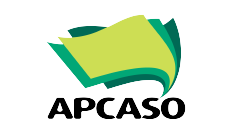This is the fifth in a series of case studies highlighting the results of the “Global Fund Realities on the Ground” a research study conducted by APCAS0’s APCRG Platform to measure civil society and communities’ experience when engaging in the key stages of country dialogue process under the Global Fund 2017-2019 funding cycle.
Communities are marginalised on different fronts by their gender and identity, and living with a disease makes them even further marginalised. Likewise, their marginalisation makes them more vulnerable to disease– they are essentially the population that disease programmes should endeavour to reach. Ensuring their inclusion in national disease programmes’ decision making processes helps them gain an active role in reducing the burden of disease in their lives.
Female entertainment workers as well as transgender persons living with HIV have a foothold in the decision-making on disease programmes as they sit in various capacities in Cambodia’s Country Coordinating Mechanism (CCM) and its Technical Working Groups (TWGs). From country dialogues, through the drafting of the funding request and up to the budget development, these community based organisations and key and affected populations have been closely involved with the funding process. The Cambodian Women for Peace and Development (CWPD), an organisation working with female entertainment workers, affirmed their involvement in a survey conducted by APCASO APCRG in 2018:
“Every cycle of funding– organisation, associations, and representative groups are always given the opportunity to participate in consultations, to make suggestions, and to monitor the progress of the project.”
CWPD works in labour organising, and through their Smart Girl programme for female entertainment workers encompasses not just capacity building but also sexual and reproductive health services, particularly testing and treatment for HIV/AIDS.
When asked what enabled their engagement, CWPD responded that: “With good cooperation and coordination from the national level (NCHADS), KHANA and all relevant stakeholders, women’s associations had the opportunity to comment, evaluate, implement and evaluate the effectiveness of project implementation and the budget utilization [for] transparency.” They further maximised their engagement by participating in community-led consultations, being part of the funding request writing team and also taking the opportunity to comment on the final draft of the Funding Request.
While the CCM structure supports the multistakeholder process, there are still differences in capacity among the stakeholders themselves. Executive Director Chamreun Choub Souk of Khmer HIV-AIDS NGO Alliance (KHANA), acknowledges as much when speaking of how community organisations and key populations engage with the Global Fund. But he is proud to say that civil society engagement in the CCM is enriched by the participation of diverse voices. Choub Souk also cited the involvement of Bandanh Chaktomok, an LGBT network, which has been able to bring in transgender members to sit at the CCM. He says that while this organisation does not necessarily have a formal structure, they are able to raise their issues effectively at different opportunities where engagement is crucial and strategic.
Choub Souk meanwhile reported that since the survey was conducted, civil society organisations are more and more able to raise their concerns in the open spaces provided by the country dialogues, the field visits of country teams and during the meetings of the technical working groups focusing on a specific disease.
In fostering an environment for diverse voices and viewpoints to thrive, a CCM has already taken a significant step in meeting the Global Fund’s expectations that “functional networks, linkages and partnerships between community actors and national programs are in place for effective coordination and decision-making.”
The voices of key population organisations and community networks and their ability to engage can be strengthened by promoting the development of mechanisms for strengthening their capacity and sustaining continuous engagement, such as regular in-person meetings and broader inclusion in the funding process. Key populations and communities must be supported to be able to conduct consultations among their constituencies and their representation in CCM structures must be community-led and organized. In turn, traditional stakeholders must be oriented with the significance and crucial role of key populations and communities in engaging in CCMs.
Sources
Cambodian Women for Peace and Development (CWPD). https://www.cwpd.net/
APCASO APCRG, 2019. Global Fund: Realities on the Ground report, rertrieved from https://apcaso.org/apcrg/wp-content/uploads/2020/01/Global-Fund-Realities-on-the-Ground_APCASO.pdf
Global Fund. 2014. Community Systems Strengthening Framework. https://www.theglobalfund.org/media/6428/core_css_framework_en.pdf
